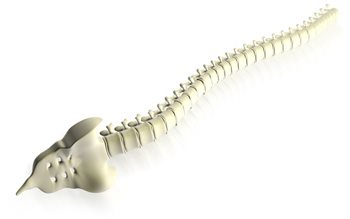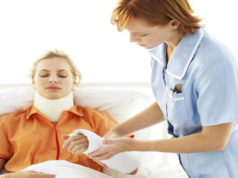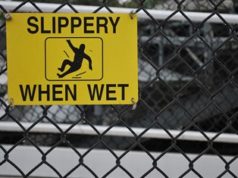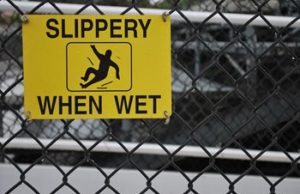
Spinal Cord Injuries: Understanding the Causes, Symptoms, and Management
Introduction
Spinal cord injuries (SCI) are one of the most devastating injuries a person can experience. They can result in severe physical impairment, emotional distress, and financial burden. SCI can occur due to a variety of causes, including trauma, disease, and congenital defects. The impact of SCI on a person’s life can be profound and long-lasting, requiring a lifetime of care. Therefore, it is essential to understand the causes, symptoms, and management of SCI to help prevent their occurrence and provide better care to those who are affected.
Understanding Spinal Cord Injuries
The spinal cord is a bundle of nerves that runs along the back from the brainstem to the lower back. It is responsible for transmitting messages between the brain and the rest of the body. Spinal cord injuries occur when there is damage to the spinal cord, which can result in a loss of function and sensation below the site of injury.
Causes of Spinal Cord Injuries
Trauma is the most common cause of SCI, accounting for approximately 80-90% of cases. The leading causes of trauma-related SCI are vehicular accidents, falls, and sports injuries. Other less common causes of SCI include diseases such as cancer, infections, and degenerative conditions, as well as congenital defects.
Symptoms of Spinal Cord Injuries
The symptoms of SCI depend on the location and severity of the injury. The symptoms can range from mild to severe, including pain, muscle weakness, numbness, loss of sensation, bladder, and bowel dysfunction, and paralysis. The following are the different types of SCI:
– Tetraplegia: Tetraplegia, also known as quadriplegia, is a condition in which the injury occurs in the cervical spine. This results in paralysis of both arms and legs, as well as chest and abdominal muscles.
– Paraplegia: Paraplegia occurs when the injury occurs in the thoracic, lumbar, or sacral regions of the spine. This results in paralysis of the legs and lower body.
– Complete SCI: A complete SCI results in a total loss of function and sensation below the site of injury.
– Incomplete SCI: An incomplete SCI results in partial loss of function and sensation below the site of injury. Incomplete SCI can result in varying degrees and patterns of paralysis.
Management of Spinal Cord Injuries
The management of SCI requires a multidisciplinary approach involving healthcare professionals, such as physicians, nurses, physiotherapists, occupational therapists, and social workers. The management of SCI focuses on preventing further injury, stabilizing the spine, and maximizing the individual’s function and independence.
Acute Management of Spinal Cord Injuries
The acute management of SCI involves a series of interventions aimed at preventing further damage to the spinal cord and other associated injuries. These interventions include:
– Stabilizing the spine: Stabilization of the spine is the primary goal of acute management. This is achieved by immobilizing the spine with a cervical collar, backboard, or other specialized devices.
– Surgical intervention: Surgery may be necessary to remove any fragments of bone or foreign objects that may be compressing the spinal cord. Additionally, surgery may be necessary to stabilize the spine and prevent further damage.
– Medications: Medications such as corticosteroids may be administered to reduce inflammation and swelling around the spinal cord.
Rehabilitation of Spinal Cord Injuries
The rehabilitation of SCI begins as early as possible and involves a comprehensive program that aims to maximize the individual’s function and independence. The rehabilitation program usually includes the following:
– Physical therapy: Physical therapy is essential in helping individuals with SCI regain strength, mobility, and independence. Physical therapy may include exercises to improve muscle strength, range of motion, and functional activities such as dressing and grooming.
– Occupational therapy: Occupational therapy is focused on helping individuals with SCI perform everyday activities, such as bathing, dressing, and using the bathroom. Occupational therapists may recommend adaptive equipment such as wheelchair modifications, specialized utensils, and other assistive devices to enhance the individual’s function and independence.
– Speech therapy: Speech therapy may be necessary for individuals with cervical SCI, which can affect speech and swallowing function.
– Vocational rehabilitation: Vocational rehabilitation is focused on helping individuals with SCI return to work or pursue new career opportunities.
Psychosocial Support
The psychosocial impact of SCI is significant and can often result in depression, anxiety, and reduced quality of life. Psychosocial support is essential in helping individuals with SCI cope with the emotional and social challenges that arise from their injury. Psychosocial support may include individual and group counseling, peer support, and support from family and friends.
Preventing Spinal Cord Injuries
The prevention of SCI is a multifaceted approach that involves education, public policy, and injury prevention strategies. The following are some strategies that can help prevent SCI:
– Proper seatbelt use and proper car seat installation
– Helmet use while engaging in sports and recreational activities
– Fall prevention strategies, such as removing tripping hazards and using handrails on stairs
– Public policy initiatives, such as enforcing speed limits and safe driving practices
– Avoiding risky behaviors such as driving while under the influence of drugs or alcohol
Conclusion
Spinal cord injuries are life-changing events that can have a profound impact on a person’s physical, emotional, and financial well-being. Understanding the causes, symptoms, and management of SCI is essential in preventing their occurrence and providing better care to those who are affected. A multidisciplinary approach to SCI management, including acute medical management, rehabilitation, and psychosocial support, can help individuals with SCI achieve their maximum level of function and independence. Additionally, injury prevention strategies, such as education, policy initiatives, and injury prevention strategies, can help reduce the incidence of SCI.
– Paraplegia: Paraplegia occurs when the injury occurs in the thoracic, lumbar, or sacral regions of the spine. This results in paralysis of the legs and lower body.
– Complete SCI: A complete SCI results in a total loss of function and sensation below the site of injury.
– Incomplete SCI: An incomplete SCI results in partial loss of function and sensation below the site of injury. Incomplete SCI can result in varying degrees and patterns of paralysis.
– Surgical intervention: Surgery may be necessary to remove any fragments of bone or foreign objects that may be compressing the spinal cord. Additionally, surgery may be necessary to stabilize the spine and prevent further damage.
– Medications: Medications such as corticosteroids may be administered to reduce inflammation and swelling around the spinal cord.
– Occupational therapy: Occupational therapy is focused on helping individuals with SCI perform everyday activities, such as bathing, dressing, and using the bathroom. Occupational therapists may recommend adaptive equipment such as wheelchair modifications, specialized utensils, and other assistive devices to enhance the individual’s function and independence.
– Speech therapy: Speech therapy may be necessary for individuals with cervical SCI, which can affect speech and swallowing function.
– Vocational rehabilitation: Vocational rehabilitation is focused on helping individuals with SCI return to work or pursue new career opportunities.
– Helmet use while engaging in sports and recreational activities
– Fall prevention strategies, such as removing tripping hazards and using handrails on stairs
– Public policy initiatives, such as enforcing speed limits and safe driving practices
– Avoiding risky behaviors such as driving while under the influence of drugs or alcohol
A spinal cord injury (SCI) is classified as a type of injury that results from damage to any of the following components of the spinal cord, such as the spinal cord itself, vertebrae, spinal nerves, or intervertebral disks. Although there exists the common misconception that the spinal cord and the back are interchangeable, they are not. While the human back is comprised of bones, the spinal cord is a far more complex construct, consisting of highly-specialized nerves, tissue, and bones.
What is the Spinal Cord?
The spinal cord consists of bundled nerves, cells, tissues, and disks, which – in addition to the human brain – comprise the human nervous system. The neural circuitry located within the spinal cord is responsible for the transmission of movement and sensation within the human body.
Spinal Cord InjuriesSpinal cord injuries are amongst the most traumatic injuries that can be sustained by the human being, due to the fact that the spinal cord is responsible for a majority of the human being’s bodily functions, operations, and stasis. As previously stated, the delicate construct of the spinal cord allows for it to be damaged quite easily under specific circumstances. There exist two primary types of spinal cord injuries:
1. Degenerative spinal cord injury is classified as acquired diseases, syndromes, or deficiencies that contribute to the degradation and/or damage of the spinal cord. In a majority of cases, these types of spinal cord injuries are categorized as infectious diseases. Examples of these spinal cord injuries are meningitis, polio, and muscular atrophy. The contraction of these diseases, as well as subsequent spinal cord injury resulting from them, is more difficult to determine than blunt, direct, and physical spinal cord injuries.
2. Physical spinal cord injury results from impact – and subsequent damage resulting from that impact – to the spinal cord; the results of which can result in spasms, pain, loss of motor skills, loss of movement, and paralysis.
Spinal Cord Injury Recourse
Although there exists no absolute result or recovery standard under the umbrella of spinal cord injury, individuals who have sustained such injuries have experienced a multitude of results ranging from full recovery to quadriplegia. As a result of spinal cord injury, months – and sometimes a lifetime – of therapy and medical care is necessary to ensure the survival of the victim.























